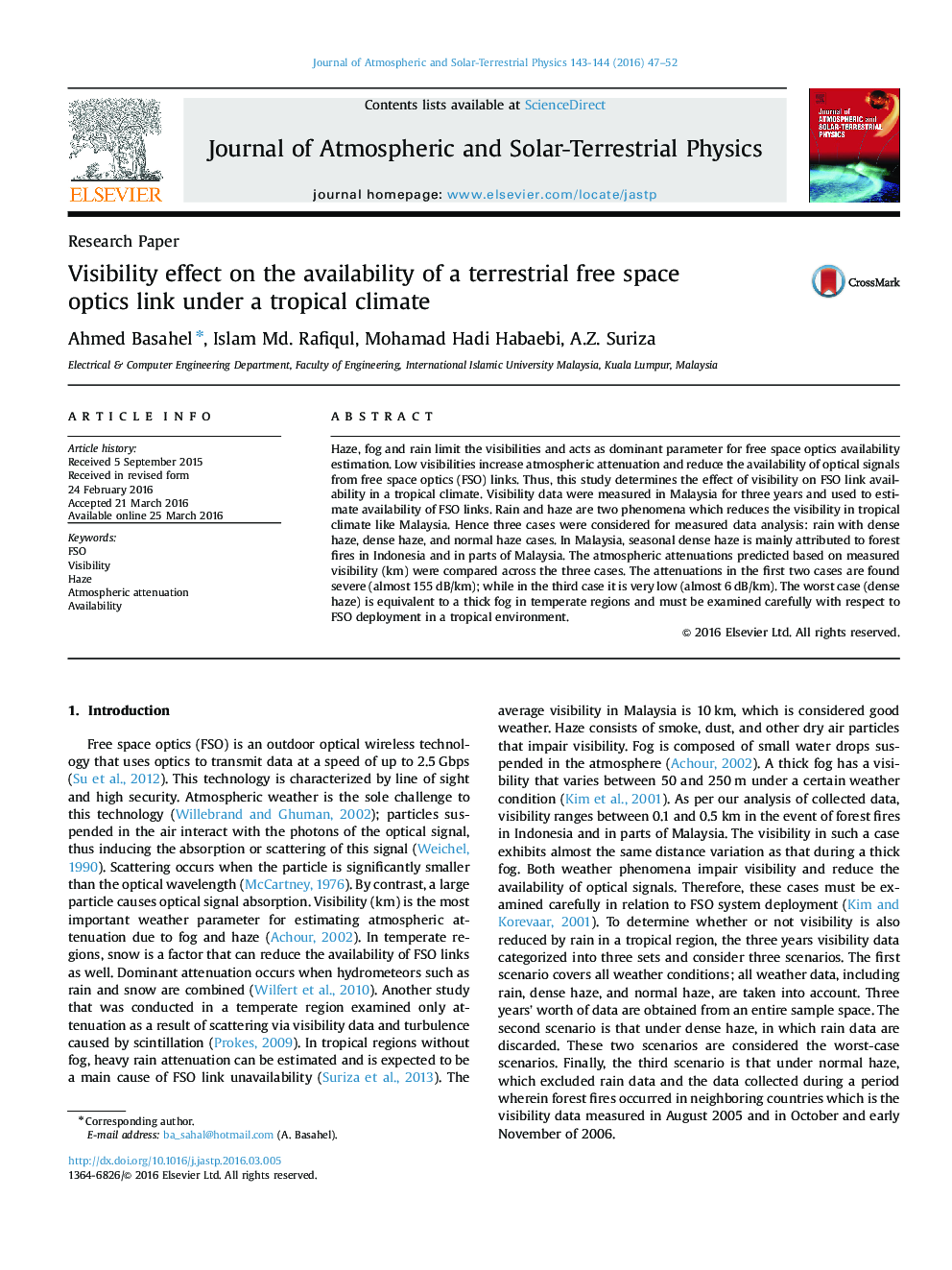| Article ID | Journal | Published Year | Pages | File Type |
|---|---|---|---|---|
| 8139902 | Journal of Atmospheric and Solar-Terrestrial Physics | 2016 | 6 Pages |
Abstract
Haze, fog and rain limit the visibilities and acts as dominant parameter for free space optics availability estimation. Low visibilities increase atmospheric attenuation and reduce the availability of optical signals from free space optics (FSO) links. Thus, this study determines the effect of visibility on FSO link availability in a tropical climate. Visibility data were measured in Malaysia for three years and used to estimate availability of FSO links. Rain and haze are two phenomena which reduces the visibility in tropical climate like Malaysia. Hence three cases were considered for measured data analysis: rain with dense haze, dense haze, and normal haze cases. In Malaysia, seasonal dense haze is mainly attributed to forest fires in Indonesia and in parts of Malaysia. The atmospheric attenuations predicted based on measured visibility (km) were compared across the three cases. The attenuations in the first two cases are found severe (almost 155Â dB/km); while in the third case it is very low (almost 6Â dB/km). The worst case (dense haze) is equivalent to a thick fog in temperate regions and must be examined carefully with respect to FSO deployment in a tropical environment.
Related Topics
Physical Sciences and Engineering
Earth and Planetary Sciences
Geophysics
Authors
Ahmed Basahel, Islam Md. Rafiqul, Mohamad Hadi Habaebi, A.Z. Suriza,
